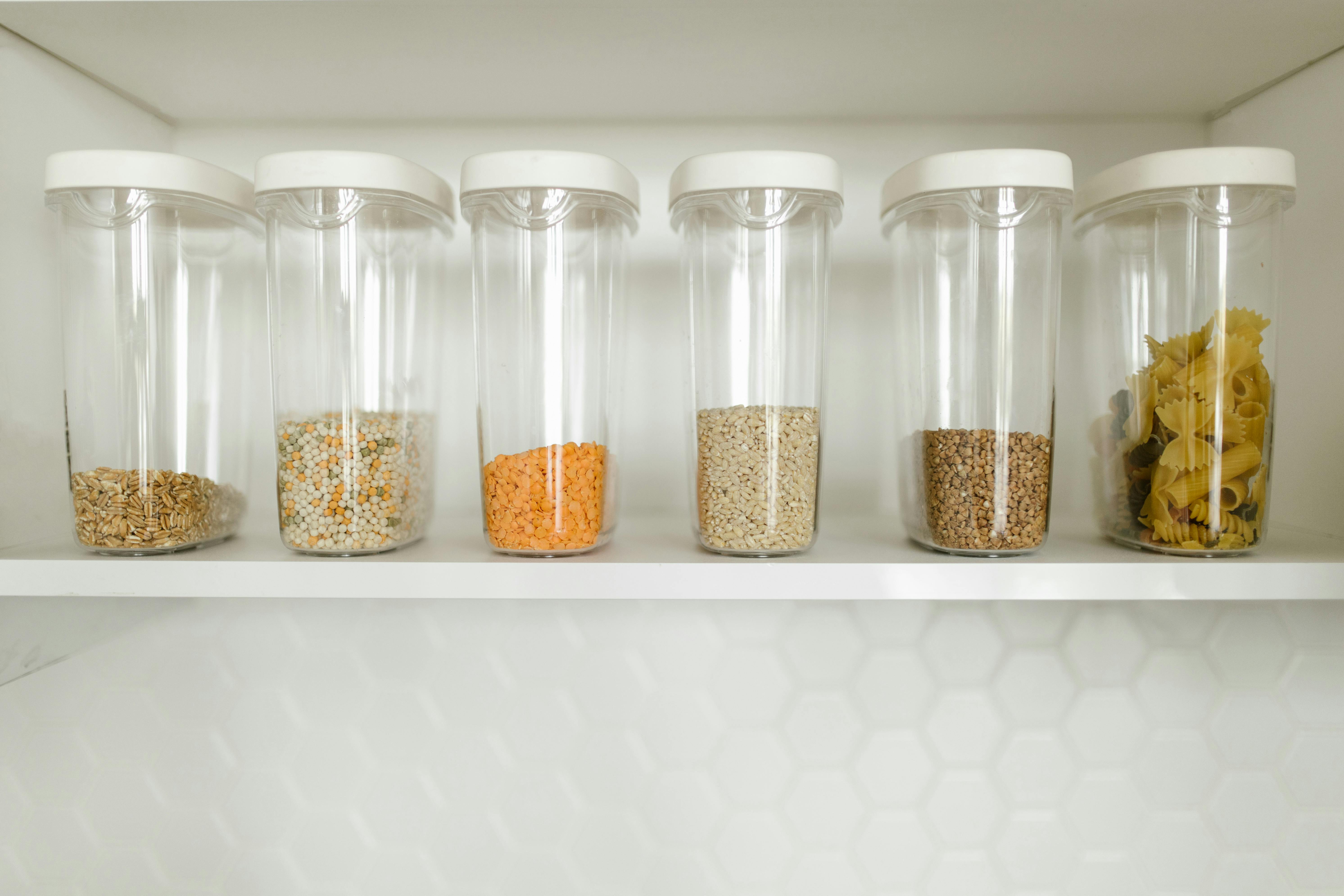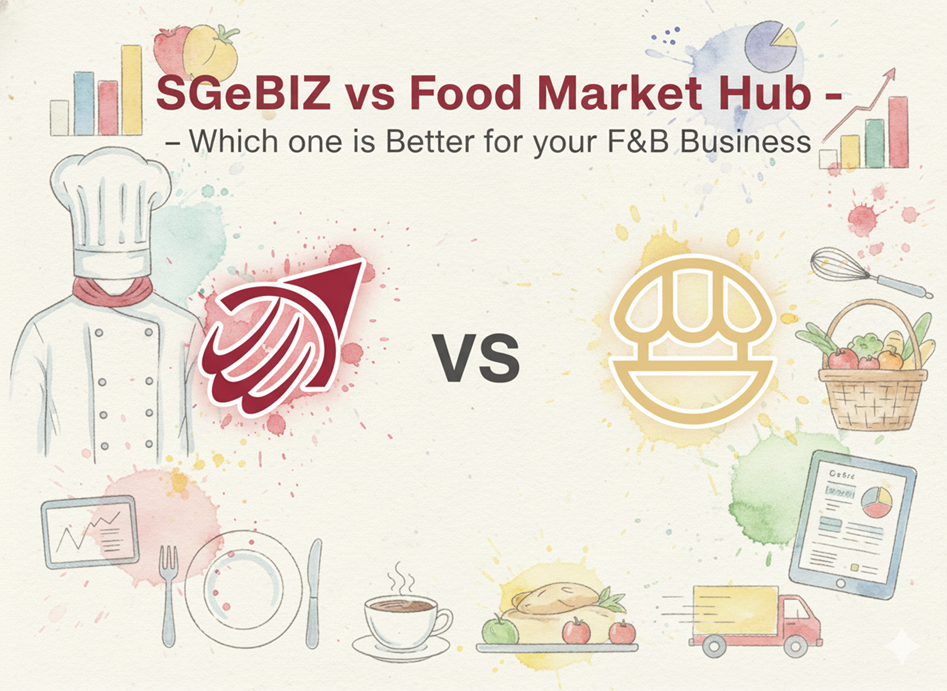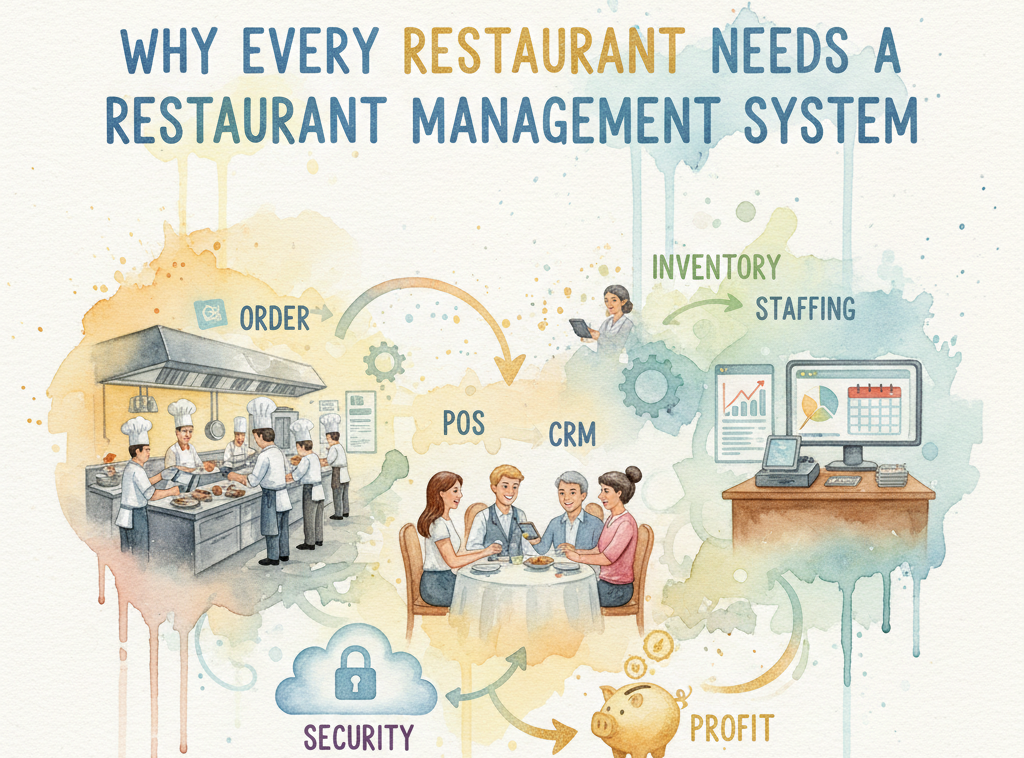How PAR Level Inventory Can Help You Manage Your Restaurant Inventory Better

If you want to keep your restaurant running smoothly, managing stock is one of the most important things you need to get right. Running out of ingredients at the wrong time can slow down your kitchen, waste staff time, and even disappoint customers. On the other hand, keeping too much stock means money gets stuck in unused supplies, and some items may even expire before you use them.
This is where the PAR level inventory comes in. It’s a smart way to track your stock so you always have enough, but not too much. Let’s break down what it is, how it works, and why you should consider using a double-level PAR system instead of a single-level one.
What Is PAR Level Inventory?
PAR stands for Periodic Automatic Replacement. It’s a system that tells you how much stock you should have at any given time. Instead of guessing when to order more supplies, you set a minimum level (the PAR level) for each item. When stock drops below that level, you get an alert to order more.
For example, if you normally use 10 kg of chicken every day, you might set a PAR level of 30 kg. This means when your stock goes below 30 kg, you order more. This way, you never run out, and you don’t waste money on excess stock.
How PAR Level Inventory Helps You
A good PAR system inventory does more than just prevent shortages. It brings multiple benefits that make your daily operations smoother and more efficient. Let’s look at how it helps in different ways.
Reduces Waste
Food waste is a major issue in the restaurant industry. According to the Food and Agriculture Organization (FAO), nearly one-third of all food produced globally goes to waste. A big part of this waste happens because of poor inventory management. When you use a PAR stock inventory, you order only what you need based on actual usage. This means fewer ingredients sit unused and spoil. By keeping stock levels optimized, you cut down on unnecessary waste, saving both food and money.
Saves Money
Ordering too much stock ties up your cash in supplies that just sit in storage. Excess inventory means money that could be used for other important expenses is locked away. A PAR level stock system ensures you purchase only the necessary amount. This keeps your cash flow healthy and prevents overstocking. You spend less on unnecessary orders and reduce the risk of items expiring before use. Over time, these savings add up, making a big difference to your finances.
Saves Time
Manually checking stock levels is a time-consuming task. Staff have to count items, update records, and figure out what needs reordering. This takes away valuable time that could be spent on cooking, serving, or improving customer experience. A PAR system inventory automates this process. It tracks stock levels in real time and alerts you when supplies run low. This eliminates the need for manual counts and guesswork. Your team can focus on what matters—delivering great food and service.
Improves Customer Satisfaction
Running out of key ingredients leads to unhappy customers. Nothing frustrates diners more than hearing their favorite dish is unavailable. With a PAR level stock system, you maintain the right amount of stock at all times. This means you rarely face shortages that disrupt service. Customers get what they order, leading to better experiences and repeat visits. Keeping your menu fully available builds trust and keeps your guests coming back.
Using a PAR system inventory makes your restaurant more efficient, cost-effective, and customer-friendly. It’s a simple change that brings big improvements.
Understanding Single-Level PAR Inventory
The Basics of Single-Level PAR
A single-level PAR inventory represents the simplest form of stock management. With this system, you establish one fixed minimum stock quantity for each ingredient or item in your kitchen. Regardless of whether it's a Monday lunch service or a Saturday dinner rush, the system triggers a reorder alert whenever inventory dips below this predetermined level. This approach works adequately for establishments with remarkably consistent sales patterns where daily usage rarely fluctuates.
When Single-Level PAR Works
This system functions reasonably well for restaurants with steady, predictable demand. Cafeterias in office buildings or breakfast diners with regular morning crowds might find this method sufficient. The uniformity of their customer flow means their ingredient usage follows similar patterns day after day. In such cases, maintaining a single reorder point simplifies inventory management without causing major operational disruptions.
The Limitations Revealed
Most food service businesses experience noticeable variations in customer traffic. Weekends typically see higher volumes than weekdays, while holidays and special events bring unexpected surges. A single-level PAR inventory struggles to adapt to these natural fluctuations. The system's rigidity creates two significant challenges that impact both operations and profitability.
Shortages During Peak Periods
When your PAR levels cater to average daily usage, busy days become problematic. That 10kg chicken PAR level that works perfectly from Tuesday to Thursday leaves you scrambling when Friday's orders double. Suddenly, your kitchen staff faces the frustration of 86'ing popular menu items mid-service. These stockouts lead to disappointed customers, rushed emergency orders, and potential damage to your establishment's reputation.
Excess Inventory on Slow Days
The flip side proves equally troublesome. To compensate for busy days, you might inflate your PAR levels beyond what you need on quieter days. This results in excessive stock sitting idle during slow periods. Perishable items risk spoilage while non-perishables tie up valuable storage space and working capital. That extra case of tomatoes you bought "just in case" starts softening before you can use it, representing pure financial loss.
The Need for Smarter Solutions
These operational pain points demonstrate why progressive restaurants are moving beyond basic single-level PAR inventory systems. The inability to adjust for predictable demand fluctuations creates unnecessary stress and waste. This reality has led to the development of more sophisticated approaches that automatically accommodate varying business levels, with double-level PAR inventory emerging as the logical next step for growing establishments.
The Smart Solution: Double-Level PAR Inventory
Adapting to Real Restaurant Needs
A double-level PAR inventory solves the biggest flaw of single-level systems by recognizing that restaurants don't operate at one consistent pace. This advanced approach establishes two separate stock thresholds that automatically adjust to your actual business patterns. Instead of forcing your inventory into a rigid, one-size-fits-all model, it respects the natural ebb and flow of customer traffic.
How Dual Thresholds Work
The system maintains a normal day PAR level that covers your typical weekday requirements. This baseline keeps operations running smoothly during standard service periods without tying up excess capital in inventory. Simultaneously, it activates a higher peak day PAR level for predictable busy periods like weekends, holidays, or special events. The system intelligently switches between these levels based on your predefined schedule or sales forecasts.
Preventing Stock Emergencies
During high-volume periods, the elevated peak day PAR level acts as your safety net. By maintaining larger buffer stocks before triggering reorders, you eliminate those heart-stopping moments when the kitchen runs out of prime ingredients during dinner rush. The system gives you enough lead time to restock before shortages occur, ensuring menu items remain available when customer demand peaks.
Optimizing Cash Flow
On slower days, the system automatically reverts to the lower normal day PAR level, preventing unnecessary overstocking. This flexibility means your money isn't trapped in excess inventory that just sits unused. You maintain just enough stock to meet demand without wasteful surplus, keeping your food costs under control and storage areas organized.
Automated Alerts Simplify Management
The system removes guesswork by sending alerts based on which PAR level is active. When Wednesday's inventory approaches the normal threshold, you get one notification. When Saturday's stock nears the peak level, you receive a different alert. This intelligent differentiation means you always order the right quantity at the right time, with no manual adjustments needed from your staff.
Continuous Improvement
Over time, the double-level PAR inventory becomes even more precise as it learns from your sales data. The system can suggest adjustments to both your normal and peak levels based on actual usage patterns, seasonal changes, or emerging trends. This creates a constantly evolving inventory management approach that grows smarter along with your business.
By implementing a double-level PAR inventory, you effectively eliminate the two biggest pain points of inventory management - emergency shortages and wasteful overstocking - while maintaining optimal control over your food costs and kitchen operations.
How Food Market Hub’s Double-Level PAR Inventory Helps You
At Food Market Hub, we understand that restaurants need flexibility. That’s why our system lets you set two different PAR levels—one for normal days and one for peak days.
Here’s what you can do with our system:
Set Custom Levels – Adjust your PAR levels based on your restaurant’s demand.
Get Smart Alerts – The system warns you when stock is low, so you never run out unexpectedly.
Reduce Guesswork – No more over-ordering or last-minute panic buying.
With our double-level PAR inventory, you always stay in control of your stock.
Managing stock doesn’t have to be stressful. A PAR level inventory makes it simple, efficient, and cost-effective. While a single-level PAR system works for some, most restaurants need the flexibility of a double-level system to handle busy and slow days.
Food Market Hub’s double-level PAR inventory gives you that flexibility. You set the levels, and the system makes sure you always have what you need—no more, no less.
Ready to take control of your stock? Try a smarter way to manage inventory today.
Want to see how it works? Get started today!










